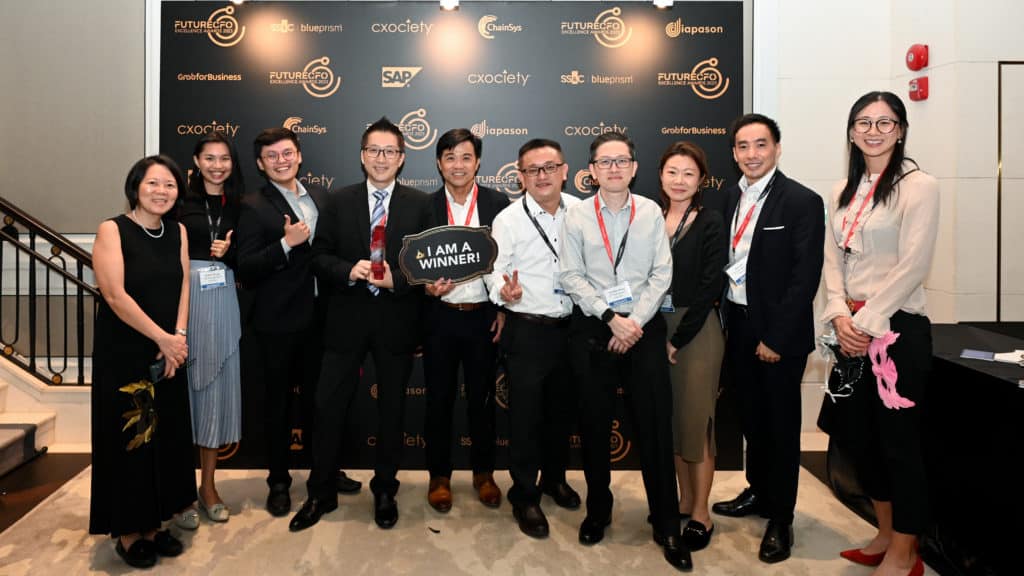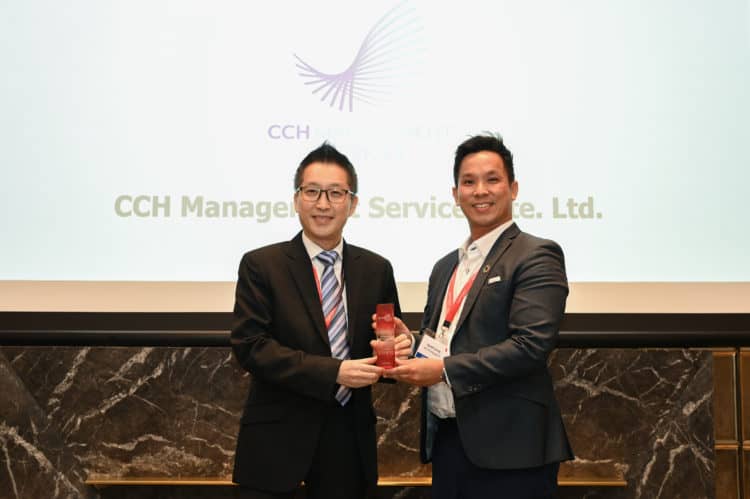Captioned photo: (left) Lim Swee Keng, group head of finance at CCH receiving the award from Daniel Leung (right), country manager, ACCA Singapore
The finance function, be it in accounting, payables, receivables, or FP&A, rely on business applications to automate processes, consolidate financial information, and generate the report for use by business and operational leaders to make decisions.
In the journey towards modernisation of finance operations to support a rapidly digitalising enterprise, one of the challenges of finance leaders will be orchestrating the adoption of the right applications to support the evolving needs of the business.
FutureCFO spoke to Lim Swee Keng, group head of finance at Clifford Capital Holdings (CCH) to get his perspective on how business applications today support the performance of the finance function.
CCH Management Services is a specialist provider of debt financing solutions globally to companies and projects with a nexus to Singapore in the infrastructure and maritime sectors. The company recently won the FutureCFO 2023 awards in the category of "Most Innovation Use of Business Applications."

Which business applications would you consider to have had the most significant impact on the finance function?
Lim Swee Keng: Enterprise Planning and Budgeting Cloud-based solution, it provides a unified driver-based planning and budgeting solution. Financial plans and budgets can now be refreshed efficiently driven by changes to business plan assumptions or drivers.
The new solution greatly improves the efficiency of the entire financial planning and budgeting cycle, as well as enhances timeliness in information sharing with key stakeholders.
Prior to the introduction (and subsequent use) of this application, what would you say were pre-conceived misconceptions?
Lim Swee Keng: Enterprise planning and budgeting can only be refreshed once a year due to the vast amount of work involved in coordination, multiple iterations, and reporting updates.
The new solution empowers the business and functional leaders to review, manage and forecast their business plans and financial budgets proactively with the help of scenario modelling and analysis functionalities. This enables the organisation to be more agile and has better insights into the group’s businesses and financial performance throughout the year.
What were the top three (3) learnings from the adoption of the application?
Lim Swee Keng: Early engagement and inclusion of functional stakeholders in requirements gathering, design and specifications are key ingredients to the success and buy-in to changes of the proposed new solution.
Never underestimate the challenges involved in changing mindsets, and behaviours, and adopting new ways of doing things, regardless of the size and complexity of an organisation.
Having the right solution and service partners who are committed to establishing a long-term strategic partnership instead of just short-term commercial interest is key to the company’s digitisation initiatives.
What one lesson stands out from your experience?
Lim Swee Keng: The project team’s priorities, focus and time and partnership with the business are of utmost importance to the success of the project. The project team and businesses’ goals and objectives must be aligned and prioritised to support the company's digitalisation initiative. This will help set clear expectations, roles and responsibilities, and accountability for all parties involved.
Management must provide constant support and guidance to the project team in terms of prioritisation, and capacity management, and act as a strong advocate for the new digitalisation initiative.
In hindsight, are/were there things(s) you would have done differently to improve the outcome?
Lim Swee Keng: More time could be allocated to the requirements gathering and design specification stages where external functional expertise can be engaged to assist in the redesigning of the processes and finding new solutions.
These functional consultants can bring in industry best practices and insights to the changes and improvements through digitalisation initiatives. They can also help to bridge the knowledge and communication gaps between functional stakeholders and technology partners which is crucial to the quality of project execution and delivery from start to end.
Which one technology (brand/product) has contributed most to your success?
Lim Swee Keng: Although CCH has chosen the Oracle technology platform for our finance digitalisation initiative, we felt that there are other advanced technology brand/product leaders that can meet our functional needs.

"The choice of a technology brand/product also depends on the organisational technology eco-system, integration, strength of partner's support, investment costs and benefits. The strong partnership between the functional subject matter experts, technology specialists and management, is key to the success of our digitalisation initiative."
Lim Swee Keng
What advice would you offer finance professionals going through the same exercise?
Lim Swee Keng: The digitalisation initiative cannot be viewed as a technology project only. Functional subject matter experts must take a more proactive role in managing the requirements, product/solution selection process, project delivery and driving the changes required for the success of the project.
The functional domain subject matter expertise cannot be delegated or replaced by others. Strong collaboration and partnership between functional stakeholders, technologists, businesses, and management endorsement can all be key to the success of a digitisation initiative.
* Editor's note: FutureCFO is inviting submissions to the annual FutureCFO 2024 Excellence Awards. Click here for more information.




